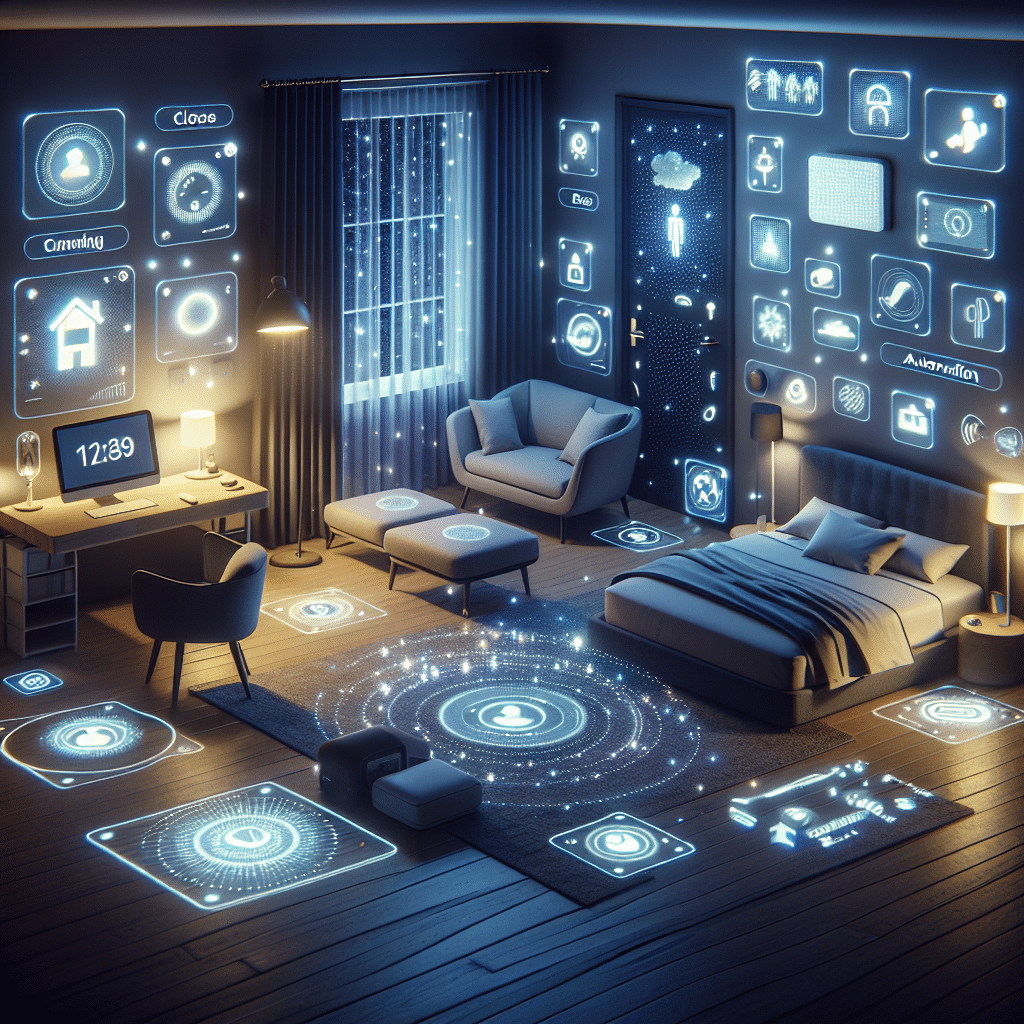Understanding Smart Home Sleep Automation Gear
The Rise of Smart Home Technology
With the rapid development of the Internet of Things (IoT), smart home technologies have transformed how we live, work, and sleep. Sleep automation gear has emerged as an integral aspect of this transformation, allowing users to create personalized sleep environments. This technology includes devices that monitor sleep patterns, adjust room conditions, and enhance relaxation, transforming mere bedrooms into sanctuaries of rest.
Key Benefits of Sleep Automation Gear
-
Improved Sleep Quality: Smart gadgets help regulate your sleep environment, making it conducive for deep rest. Studies indicate that maintaining optimal room temperature, humidity, and noise levels contributes significantly to sleep quality.
-
Personalized Sleep Tracking: Advanced sleep trackers utilize sensors to monitor various aspects of your sleep, such as heart rate, movement, and even sleep stages. This data helps users understand their sleep patterns, enabling them to make informed lifestyle adjustments.
-
Automated Environment Adjustments: Smart thermoregulators can modify room temperature, smart lights can mimic natural light patterns, and sound machines can generate white noise, creating an ideal setting that promotes sleep.
Essential Sleep Automation Devices
Smart Mattresses
Smart mattresses are equipped with sensors that monitor sleep quality, providing analytics on how well you sleep. Brands like Sleep Number and Eight Sleep offer temperature regulation features that adjust according to your body’s needs throughout the night. These mattresses can also be personalized according to preferred firmness and position settings, catering to individual comfort.
Sleep Trackers
Wearable sleep trackers, such as smartwatches and bands from companies like Fitbit, Oura, and WHOOP, record sleep metrics over time. They can analyze sleep cycles, duration, and even the efficiency of your sleep, prompting users to adopt healthier sleep habits based on the insights gained.
Smart Adjustable Beds
Smart adjustable beds allow users to raise or lower specific sections of the bed via mobile apps or voice commands. This feature promotes comfort for different sleep postures and alleviates conditions like snoring and acid reflux, improving sleep quality.
Smart Lighting Solutions
Lighting plays a crucial role in regulating circadian rhythms. Smart bulbs and LED systems, such as Philips Hue and LIFX, can be programmed to simulate natural daylight in the morning and transition to softer hues in the evening. These gradual changes help signal your body to prepare for sleep, enhancing melatonin production.
White Noise Machines
For those who struggle with environmental noise, smart white noise machines like the Hatch Restore can create soothing sounds tailored to enhance sleep. Some devices offer features such as gentle breathing exercises and meditative sounds, facilitating a tranquil sleep onset.
Integration with Smart Home Systems
Sleep automation gear can be seamlessly integrated with existing smart home systems, including Google Home, Amazon Alexa, and Apple HomeKit. This interoperability allows users to create comprehensive sleep routines using simple voice commands or mobile applications.
-
Routine Automation: With smart home integrations, you can set up sleep routines that automatically dim the lights, adjust the thermostat, and start ambient sounds at specific times to signal bedtime.
-
Geofencing Integration: Advanced smart home systems enable geofencing capabilities that automatically prepare your sleep environment as you approach your home. For instance, your bedroom might become sleep-ready when you get within a certain distance.
-
Voice Activation: Many smart sleep devices can respond to voice commands, enabling users to make real-time adjustments. By simply saying, “Goodnight,” users can automate a range of settings, like dimming lights and turning off devices, to suit their personal bedtime habits.
Data Privacy Concerns
As with all smart technologies, privacy is a significant consideration. Most sleep automation devices collect and process personal data to provide tailored insights. Ensuring users understand how their data is handled, stored, and shared is crucial for maintaining trust. Opting for devices with robust security protocols, such as end-to-end encryption and two-factor authentication, can mitigate risks.
Future Trends in Sleep Technology
The future of sleep automation gear is promising. Innovations in AI and machine learning may lead to devices that not only track sleep patterns but also predict sleep disturbances through biometric feedback. Furthermore, the rise of non-invasive technologies like smart pajamas and textured sheets can further integrate with smart algorithms, providing real-time data and enhancing comfort.
Conclusion: The Smart Sleep Revolution
Sleep automation gear can turn the fundamental act of sleeping into an optimized experience. By leveraging technology to create personalized sleep environments, users can significantly enhance their sleep quality and overall well-being. The ongoing advancements in smart home integration and data analytics promise a future where sleep is not just a necessity but an enjoyable, highly tailored experience. As sleep continues to be recognized as vital to health and productivity, investing in smart sleep automation gear will pave the way for improved nighttime routines.
